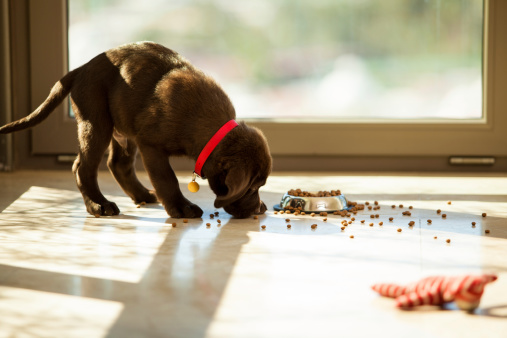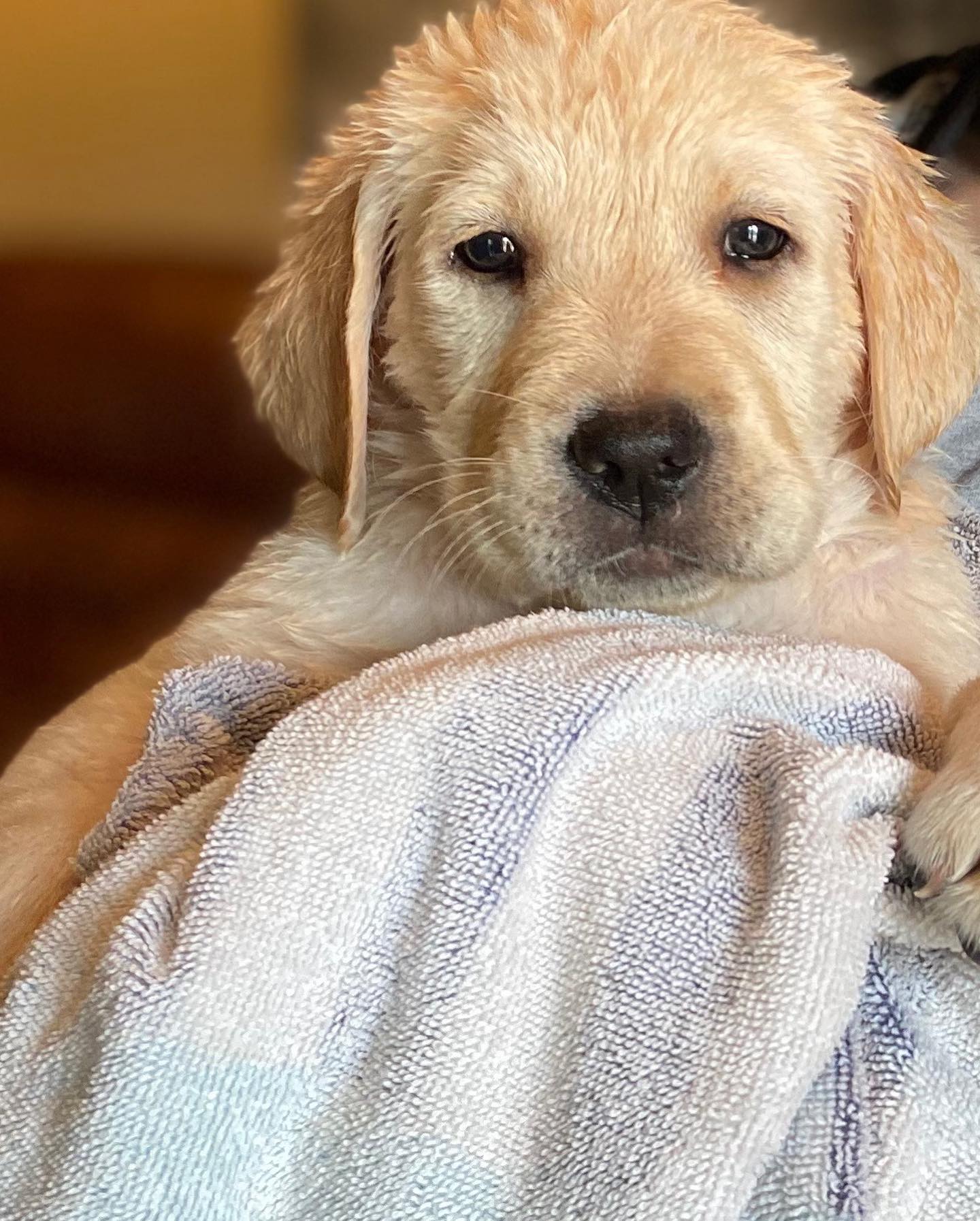Puppy Teething, nipping and biting
Jump to contents:
Kindred Pup Learning Library

Today’s post is all about Puppy Teething, nipping and biting, the next installment in our Kindred Pup Learning Library.
Puppy Teething, nipping and biting are all normal and obligatory parts of a puppy growing up to their full DOG selves. This does NOT mean that these behaviors aren’t a nuisance.
Here are a few of our Kindred Pup English Labrador Tips and Tricks for Teething, nipping and biting:
Puppy Teething, nipping and biting is a natural process that occurs when a puppy’s adult teeth start to grow in, and their baby teeth begin to fall out. During this time, puppies may experience discomfort and a strong urge to chew to relieve the pain. Here are some ways to help your puppy through this phase:
- Provide plenty of chew toys: Give your puppy a variety of safe, durable chew toys to gnaw on. Make sure they are appropriate for their size and breed, and rotate them frequently to keep things interesting.
- Freeze toys: You can also freeze some of their toys to help soothe sore gums.
- Offer cold items: Frozen fruits or veggies or a damp, frozen washcloth can be soothing to a teething puppy’s mouth.
- Redirect attention: When you catch your puppy chewing on something they shouldn’t, redirect their attention to a chew toy or bone.
- Training: Teach your puppy the “drop it” or “leave it” command, so they know to let go of anything inappropriate in their mouth.
- Supervision: Supervise your puppy at all times, and keep anything you don’t want them to chew on out of reach.
- Treats and positive reinforcement: Reward your puppy with praise and treats when they chew on appropriate items, so they learn what is expected of them.
Remember that puppy teething is temporary, and with patience and consistency, your puppy will eventually grow out of this phase.
As a mother of 6 and a breeder for years, I have learned first-hand the ways of puppies and babies/toddlers. How should you (and your child) handle a teething, nipping, biting puppy?
My first and foremost tip after all of the above has been consistently applied, is to remember to KEEP YOUR COOL. I know this is difficult, especially while a favorite nightgown has just been grabbed by the new puppy, or when a game of belly rub quickly turns painful. What naturally happens is the child SQUEAKS or SQUALLS or gives a half-giggle, half-scream.
They love the puppy; they want the puppy; but it hurts! What’s a parent to do?!?!

Explain to your child that this behavior is NORMAL, some of it is necessary, it WILL pass, and that they must learn to keep as quiet as possible or the puppy will see it as a game.
While our puppies are very smart, children’s squeaks and squals don’t sound much different to the puppy than an excited Gasp or shriek. This, I honestly believe, entices the puppy to continue the behavior seeing it as a “play date”. Teach your child to respond appropriately to Puppy Teething, nipping and biting. Here’s how: with a firm “NO” when the behavior begins, remove themselves from the behavior (more on that below) and to hold their ground. There will be time for a whine later, safely in your arms, but for now we need to make the behavior unpleasant for the puppy and not encouraged.
Practice these sessions with your child early and often. You can grab a stuffed animal and pretend to nip at their ankles, shoes and nightgowns, growling and making them giggle with delight. Teach them to give a firm “NO”. Then, teach them how to remove themselves from the situation.
Removing your puppy from the situation
It is important that the puppy is removed from the situation in order to not encourage undesirable behavior. This can be done in a variety of ways:
- Placing the puppy in a crate with a chew toy
- Substitution method, replacing a toy or chew when you remove the remote/shoe/toddlers pants from the puppy
- Putting the puppy outside, away from the undesired area
Remember, that while this can seem overwhelming in the moment, consistent training, patience and time will let this behavior pass.
How long do puppies teethe?
Puppies typically start teething at around 3-4 months old and finish by around 6-8 months old. During this time, puppies will lose their baby teeth and grow in their adult teeth. The teething process can be uncomfortable for puppies, and they may experience symptoms such as chewing on objects, drooling, and irritability. It’s important to provide your puppy with appropriate chew toys and objects to help relieve their discomfort and prevent them from chewing on inappropriate items like furniture or shoes. Once your puppy has finished teething, their adult teeth should be fully grown in, and they will have a complete set of 42 teeth. It’s important to take care of your puppy’s teeth by brushing them regularly, providing dental chews or treats, and scheduling regular check-ups with your veterinarian.
Puppies generally stop chewing on everything once they have finished teething, which usually occurs between 6-8 months of age. However, some puppies may continue to chew on objects if they are bored or if they have not been properly trained. It’s important to provide your puppy with appropriate chew toys and objects, and to supervise them when they are playing to ensure they don’t chew on anything they shouldn’t. Consistent training and positive reinforcement can also help to discourage your puppy from chewing on inappropriate objects. If your puppy continues to chew on objects despite your efforts, it’s a good idea to consult with a professional dog trainer or behaviorist for additional guidance and support.
That said, I find that the Labrador retriever “puppy stage” can last up until about 1 1/2 years of age. I’ve heard it said:
“With a labrador, you get two dogs: one insane and adorable bundle of cuddles and energy, and then a dog.”


